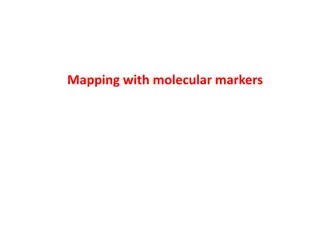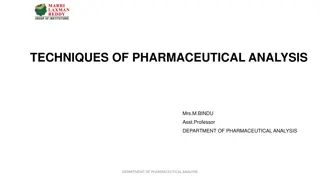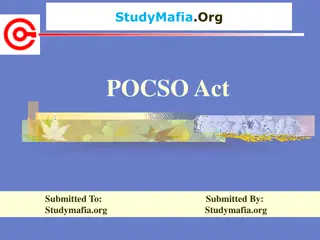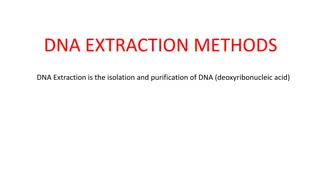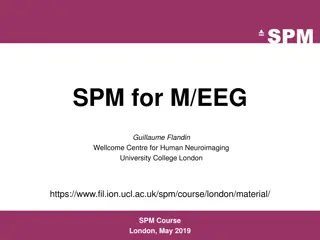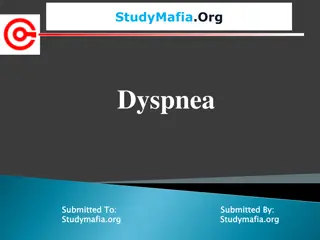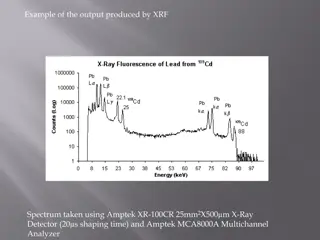StudyMafia.Org - RFLP Analysis: Applications and Techniques
The technique of Restriction Fragment Length Polymorphism (RFLP) used to identify genetic variations in DNA sequences, its applications in genome mapping, and disease analysis. Understand how RFLP analysis aids in distinguishing individuals and populations based on DNA fragment lengths."
Download Presentation

Please find below an Image/Link to download the presentation.
The content on the website is provided AS IS for your information and personal use only. It may not be sold, licensed, or shared on other websites without obtaining consent from the author.If you encounter any issues during the download, it is possible that the publisher has removed the file from their server.
You are allowed to download the files provided on this website for personal or commercial use, subject to the condition that they are used lawfully. All files are the property of their respective owners.
The content on the website is provided AS IS for your information and personal use only. It may not be sold, licensed, or shared on other websites without obtaining consent from the author.
E N D
Presentation Transcript
StudyMafia.Org Restriction Fragment Length Polymorphism(RFLP) Submitted To: Submitted By: Studymafia.org Studymafia.org
Table Contents Definition Introduction RFLP Analysis Applications of RFLP Alternatives of RFLP Conclusion 2
Definition (RFLP) is a technique that exploits variations in homologous DNA sequences, known as polymorphisms, in order to distinguish individuals, populations, or species or to pinpoint the locations of genes within a sequence. 3
Introduction The term may refer to a polymorphism itself, as detected through the differing locations of restriction enzyme sites, or to a related laboratory technique by which such differences can be illustrated. In RFLP analysis, a DNA sample is digested into fragments by one or more restriction enzymes, and the resulting restriction fragments are then separated by gel electrophoresis according to their size. 4
RFLP Analysis The basic technique for the detection of RFLPs involves fragmenting a sample of DNA with the application of a restriction enzyme, which can selectively cleave a DNA molecule wherever a short, specific sequence is recognized in a process known as a restriction digest. 6
RFLP Analysis The DNA fragments produced by the digest are then separated by length through a process known as agarose gel electrophoresis and transferred to a membrane via the Southern blot procedure. Hybridization of the membrane to a labeled DNA probe then determines the length of the fragments which are complementary to the probe. 7
RFLP Analysis A restriction fragment length polymorphism is said to occur when the length of a detected fragment varies between individuals, indicating non-identical sequence homologies. Each fragment length is considered an allele, whether it actually contains a coding region or not, and can be used in subsequent genetic analysis. 8
Applications of RFLP Analysis of RFLP variation in genomes was formerly a vital tool in genome mapping and genetic disease analysis. If researchers were trying to initially determine the chromosomal location of a particular disease gene, they would analyze the DNA of members of a family afflicted by the disease, and look for RFLP alleles that show a similar pattern of inheritance as that of the disease (see genetic linkage). 9
Applications of RFLP Once a disease gene was localized, RFLP analysis of other families could reveal who was at risk for the disease, or who was likely to be a carrier of the mutant genes. RFLP test is used in identification and differentiation of organisms by analyzing unique patterns in genome. It is also used in identification of recombination rate in the loci between restriction sites. 10
Applications of RFLP RFLP analysis was also the basis for early methods of genetic fingerprinting, useful in the identification of samples retrieved from crime scenes, in the determination of paternity, and in the characterization of genetic diversity or breeding patterns in animal populations. 11
Alternatives of RFLP The technique for RFLP analysis is, however, slow and cumbersome. It requires a large amount of sample DNA, and the combined process of probe labeling, DNA fragmentation, electrophoresis, blotting, hybridization, washing, and autoradiography can take up to a month to complete. 12
Alternatives of RFLP A limited version of the RFLP method that used oligonucleotide probes was reported in 1985. The results of the Human Genome Project have largely replaced the need for RFLP mapping, and the identification of many single-nucleotide polymorphisms (SNPs) in that project (as well as the direct identification of many disease genes and mutations) has replaced the need for RFLP disease linkage analysis (see SNP genotyping). 13
Alternatives of RFLP RFLP is still used in marker-assisted selection. Terminal restriction fragment length polymorphism (TRFLP or sometimes T-RFLP) is a technique initially developed for characterizing bacterial communities in mixed-species samples. The technique has also been applied to other groups including soil fungi. TRFLP works by PCR amplification of DNA using primer pairs that have been labeled with fluorescent tags. 14
Conclusion Restriction Fragment Length Polymorphism (RFLP) Such variation results in different sized (or length) DNA fragments produced by digesting the DNA with a restriction enzyme. RFLPs can be used as genetic markers, which are often used to follow the inheritance of DNA through families. 15
References Google.com Wikipedia.org Studymafia.org Slidespanda.com
Thanks To StudyMafia.org


